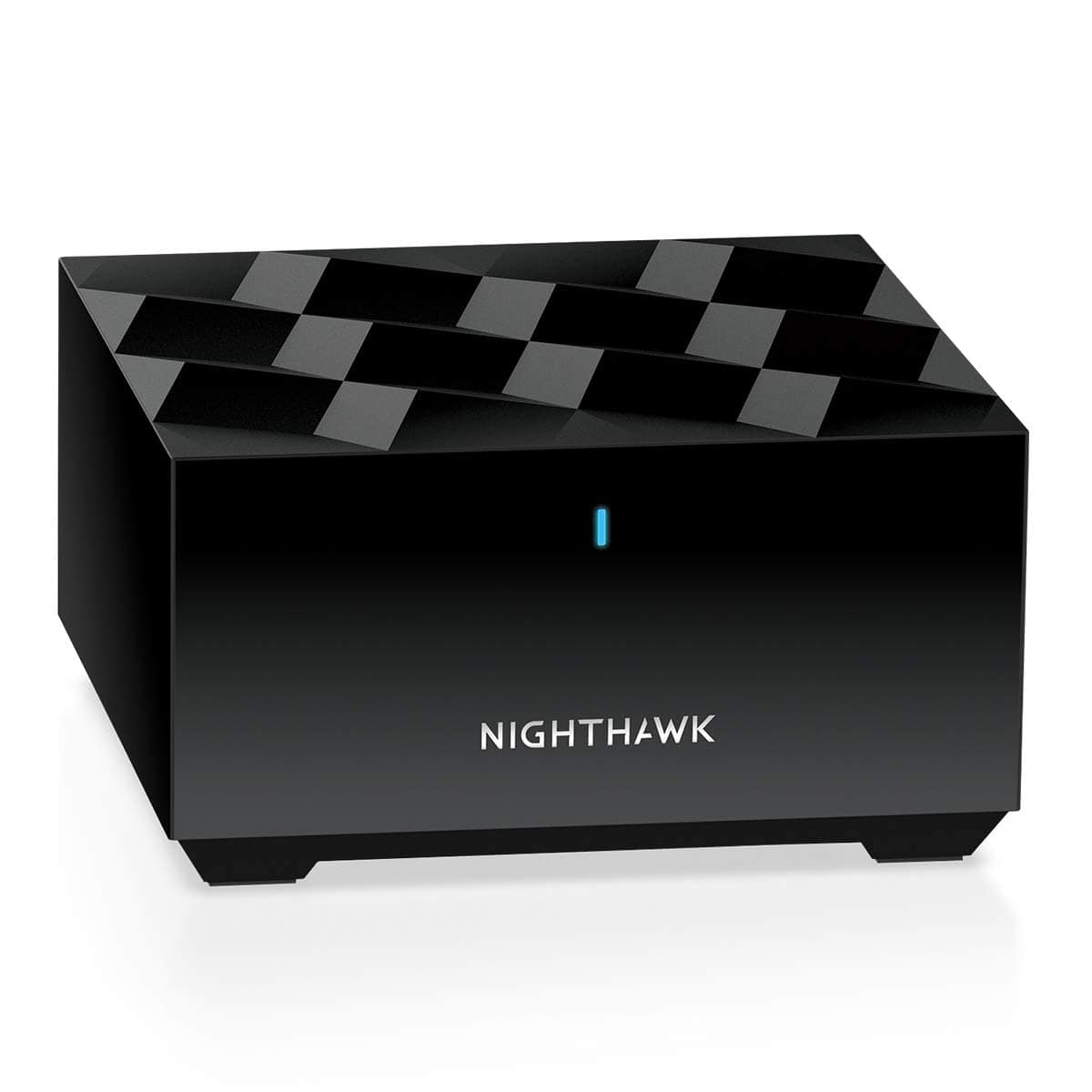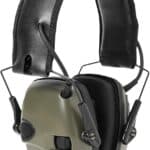Connecting your Nighthawk satellite can boost your home Wi-Fi coverage. This guide will help you sync your satellite with your router quickly and easily. To connect your Nighthawk satellite, place it near your router, press the Sync button on both devices, and wait for the satellite’s LED to turn blue.
A strong mesh network can eliminate dead spots in your home. The Nighthawk Mesh WiFi 6 System offers fast speeds and wide coverage. By adding satellites, you can extend your network to reach every corner of your house.
Setting up your satellite is simple. You’ll need your Nighthawk router and satellite, both powered on. The process takes just a few minutes. Once connected, you can move the satellite to its final location for optimal coverage.
| Device | Function | Key Feature |
|---|---|---|
| Nighthawk Router | Main Wi-Fi source | Broadcasts primary signal |
| Nighthawk Satellite | Wi-Fi extender | Expands network coverage |
| Nighthawk App | Management tool | Controls network settings |
Expanding Your WiFi with a Nighthawk Mesh Satellite
Adding a Nighthawk Dual-Band WiFi 6 Mesh satellite to your existing network is a great way to eliminate dead zones and boost your WiFi coverage. Here’s how to connect it:
1. Placement is Key
- Find the Right Spot: Place the satellite in a central location between your router and the area with weak WiFi.
- Avoid Obstructions: Keep the satellite away from thick walls, large metal objects, and appliances that might interfere with the signal.
- Visualize the Connection: Imagine a line between your router and the satellite. Try to minimize obstacles along that path.
2. Power Up the Satellite
- Connect the Power Adapter: Plug the satellite’s power adapter into an electrical outlet.
3. Sync the Satellite with Your Router
Your Nighthawk satellite is designed to automatically sync with your existing Nighthawk router.
- Automatic Sync: The satellite’s LED should start pulsing white as it searches for the router’s signal. Once a connection is established, the LED will turn solid blue.
- Manual Sync (If Needed): If the LED doesn’t turn blue, you might need to sync manually:
- Press the Sync button on your router.
- Within two minutes, press the Sync button on the satellite.
- Wait for the satellite’s LED to turn blue.
4. Verify the Connection
- Check the Satellite’s LED: A solid blue LED indicates a strong connection to the router.
- Test Your WiFi: Connect a device to the WiFi network and check the signal strength in the area where you placed the satellite.
Troubleshooting Tips
- Satellite LED is Amber: This means the connection between the router and satellite is weak. Try moving the satellite closer to the router or to a different location with fewer obstructions.
- Satellite Can’t Find the Router: Make sure the satellite is within range of the router’s WiFi signal. You might need to reposition the satellite or add another satellite to extend the network further.
- Slow Speeds: Check for sources of interference, such as other electronic devices or physical obstacles. You might also need to adjust the WiFi channels on your router to reduce congestion.
Optimizing Your Mesh Network
- Firmware Updates: Keep your router and satellite firmware up to date for the best performance and security.
- Wired Backhaul: If possible, connect your satellite to your router using an Ethernet cable for a faster and more stable connection. This is called a wired backhaul.
- Channel Optimization: Use the Nighthawk app to analyze your WiFi environment and automatically select the best WiFi channels.
Advanced Features in the Nighthawk App
The Nighthawk app offers a range of features to manage and optimize your mesh network:
- Network Map: View a visual representation of your network, including the router, satellites, and connected devices.
- Speed Test: Test your internet speed and WiFi performance.
- Guest Network: Create a separate WiFi network for guests.
- Parental Controls: Manage internet access for devices on your network.
- Traffic Meter: Monitor your internet usage.
Understanding WiFi 6 Technology
WiFi 6 (also known as 802.11ax) is the latest generation of WiFi technology. It offers several advantages over previous versions:
- Faster Speeds: WiFi 6 can deliver speeds up to 4 times faster than WiFi 5 (802.11ac).
- Increased Capacity: WiFi 6 can handle more connected devices simultaneously without slowing down.
- Improved Efficiency: WiFi 6 is more efficient at delivering data, which can improve battery life on your devices.
- Better Range: WiFi 6 can provide better coverage, especially in crowded environments.
If you’re looking to upgrade your home network, a WiFi 6 mesh system like the Nighthawk is an excellent choice. It can provide fast, reliable WiFi coverage throughout your home, even if you have a lot of devices connected.
Preparing for Installation
Setting up your Nighthawk Mesh system requires careful preparation. You’ll need to understand your setup and gather the right components before starting.
Understanding Your Nighthawk Mesh Setup
The Nighthawk Mesh system consists of a main router and one or more satellites. These work together to create a seamless WiFi network in your home. The router connects to your modem and broadcasts the initial signal.
Satellites extend this signal to reach areas far from the router. They communicate wirelessly with the router to expand coverage. Place satellites strategically for best results.
Your specific model may have unique features. Check the user manual for details about your particular Nighthawk Mesh system.
Gathering Necessary Components
To set up your Nighthawk Mesh system, you’ll need:
- Nighthawk Mesh Router
- Nighthawk Mesh Satellite(s)
- Ethernet cable
- Power adapters for router and satellites
- Your existing modem
- A computer or mobile device for setup
| Component | Purpose |
|---|---|
| Router | Central hub, connects to modem |
| Satellite | Extends WiFi coverage |
| Ethernet cable | Connects router to modem |
| Power adapters | Supply power to devices |
Make sure you have a working internet connection. Unplug your modem before starting the setup process. This helps ensure a clean connection when you plug in your new Nighthawk router.
Keep your Nighthawk Mesh system’s box nearby. It contains important information like default network names and passwords you’ll need during setup.
Setting Up Your Nighthawk Satellite
Proper setup of your Nighthawk satellite is crucial for optimal WiFi coverage. Follow these steps to position, power, and sync your device effectively.
Locating the Optimal Position for Your Satellite
Choose a spot midway between your router and the area with weak WiFi. Avoid placing it near metal objects, microwaves, or cordless phones. Ideally, position the satellite at eye level or higher for better signal distribution.
Consider the layout of your home. Walls and floors can obstruct signals, so try to minimize these barriers. A central location on each floor works well for multi-story homes.
Use the Netgear app to test different locations. It offers a signal strength meter to help you find the best spot. Remember, you can always adjust the position later for improved performance.
Connecting the Satellite to Power
Plug your Nighthawk satellite into a wall outlet using the provided power adapter. Avoid using extension cords or power strips, as they may not supply enough power.
The LED on the front will light up, indicating it’s receiving power. Wait for the LED to turn solid blue, which means it’s ready for syncing.
If the LED doesn’t light up, try a different outlet. Ensure the power adapter is securely connected to both the satellite and the wall socket.
Syncing the Satellite with Your Nighthawk Router
Press the Sync button on your router, then press it on the satellite within two minutes. The satellite’s LED will pulse white during syncing.
Watch the LED colors:
- Blue: Good connection
- Amber: Fair connection
- Magenta: Failed to sync
If syncing fails, move the satellite closer to the router and try again. You can also use an Ethernet cable for a wired backhaul connection if available.
Once synced, your Nighthawk WiFi system will automatically optimize your network. You can now enjoy expanded WiFi coverage throughout your home.
| LED Color | Meaning |
|---|---|
| Blue | Good connection |
| Amber | Fair connection |
| Magenta | Sync failed |
| White (pulsing) | Syncing in progress |
Configuring Network and Connectivity Settings
Proper configuration of your Nighthawk satellite ensures optimal performance and security. These steps will guide you through accessing settings, updating firmware, and adjusting network controls.
Accessing the Router’s Admin Interface
To configure your Nighthawk satellite, you need to access the admin interface. Open a web browser and enter routerlogin.net in the address bar. If this doesn’t work, try 192.168.1.1.
Enter your admin username and password. The default is usually “admin” for both, but change this for security.
Once logged in, you’ll see the dashboard. Here you can view network status and access various settings.
Navigate to the “Advanced” tab for more detailed options. This includes WiFi settings, security features, and network configuration.
Updating Firmware to the Latest Version
Keeping your satellite’s firmware up-to-date is crucial. It fixes bugs and adds new features.
Check for updates in the “Administration” section. Look for a “Router Update” or “Firmware Update” option.
If an update is available, download and install it. Don’t interrupt the process. Your satellite will restart after updating.
Set up automatic updates if possible. This ensures you always have the latest features and security patches.
Adjusting Network Access Control and Security Settings
Customize your network’s security to protect against unauthorized access. Start by changing the default WiFi network name (SSID) and password.
Enable WPA3 encryption for the strongest security. If your devices don’t support it, use WPA2-PSK (AES).
Set up a guest network for visitors. This keeps your main network secure.
Use access control to manage which devices can connect. You can whitelist or blacklist specific devices by MAC address.
Consider enabling a VPN connection for added privacy when browsing.
| Setting | Recommendation |
|---|---|
| Encryption | WPA3 or WPA2-PSK (AES) |
| SSID | Unique, non-identifying name |
| Password | Strong, at least 12 characters |
| Guest Network | Enabled, with separate password |
| Access Control | Whitelist trusted devices |
| VPN | Enabled for privacy |
Adjust the MTU size if needed. The default is usually fine, but lowering it can help with some internet connections.
Configure IPv6 if your ISP supports it. This future-proofs your network and can improve performance.
Technical Support and Resources
Netgear offers comprehensive support options for Nighthawk Mesh WiFi 6 users. These services help resolve connectivity issues and optimize satellite performance.
Utilizing Netgear Support and ProSupport Services
Netgear provides multiple support channels for Nighthawk users. The official website hosts setup guides, user manuals, and firmware updates. You can access these resources by entering your model number.
For personalized assistance, contact Netgear’s technical support team. They offer phone, chat, and email support options. Create a Netgear account to streamline the process and track your cases.
ProSupport Services offer advanced help for complex setups. This paid service includes:
- 24/7 priority support
- Setup assistance
- Network optimization
- Extended warranty coverage
Troubleshooting Common Issues
Many Nighthawk satellite connection problems have simple fixes. Try these steps:
- Restart your router and satellites
- Check firmware versions and update if needed
- Verify proper placement of satellites
- Use the Nighthawk app to test connection strength
If satellites show amber LEDs, they may be too far from the router. Move them closer or add additional satellites to extend coverage.
For persistent issues, check Netgear’s community forums. Other users often share helpful tips and workarounds.
| Issue | Possible Solution |
|---|---|
| Satellite won’t sync | Connect via Ethernet to establish initial link |
| Devices connect to wrong node | Enable smart connect or manually assign to closest satellite |
| Poor performance | Optimize placement, update firmware, check for interference |
Frequently Asked Questions
Connecting and troubleshooting Nighthawk satellites involves several key steps. Let’s explore common questions about setting up, syncing, and resetting these devices to enhance your home Wi-Fi network.
How can I connect my Nighthawk satellite to my Wi-Fi network?
To connect your Nighthawk satellite, place it near your router. Press the Sync button on both devices. Wait for the satellite’s LED to turn blue. This indicates a successful connection.
Move the satellite to its final location. The LED should stay blue. If it turns amber, move it closer to the router for better signal strength.
What steps are involved in syncing a Nighthawk Mesh satellite?
Launch the Nighthawk app on your smartphone. Tap “Add Satellite” and follow the prompts. The app will guide you through optimal placement and connection.
Alternatively, use the Sync button method. Press the Sync button on your router, then on the satellite within 2 minutes.
How to troubleshoot a Nighthawk satellite that is not connecting?
First, ensure the satellite is within range of your router. Move it closer if needed. Check that both devices are powered on.
Restart both the router and satellite. Try the sync process again. If issues persist, reset the satellite to factory settings.
What does an orange light on a Netgear Nighthawk satellite indicate?
An orange light means the satellite has a fair connection to the router. It’s functional but not optimal. Try moving the satellite closer to the router for better performance.
If the light remains orange, check for interference from walls or electronic devices.
What is the correct procedure to reset a Nighthawk satellite?
Locate the Reset button on your satellite. It’s usually a small hole on the back or bottom. Use a paperclip to press and hold the button for about 7 seconds.
Release when the LED starts flashing. The satellite will reboot to factory settings. You’ll need to set it up again.
Can a Nighthawk router be configured to function as an additional Mesh satellite?
Most Nighthawk routers can’t be converted to satellites. Netgear designs specific devices for satellite functions in their mesh systems.
For mesh expansion, purchase compatible Nighthawk satellites. These are designed to work seamlessly with your existing system.
| Device Type | Can Function as Satellite? |
|---|---|
| Nighthawk Router | Usually No |
| Nighthawk Satellite | Yes |
| Nighthawk Mesh System | Yes |







